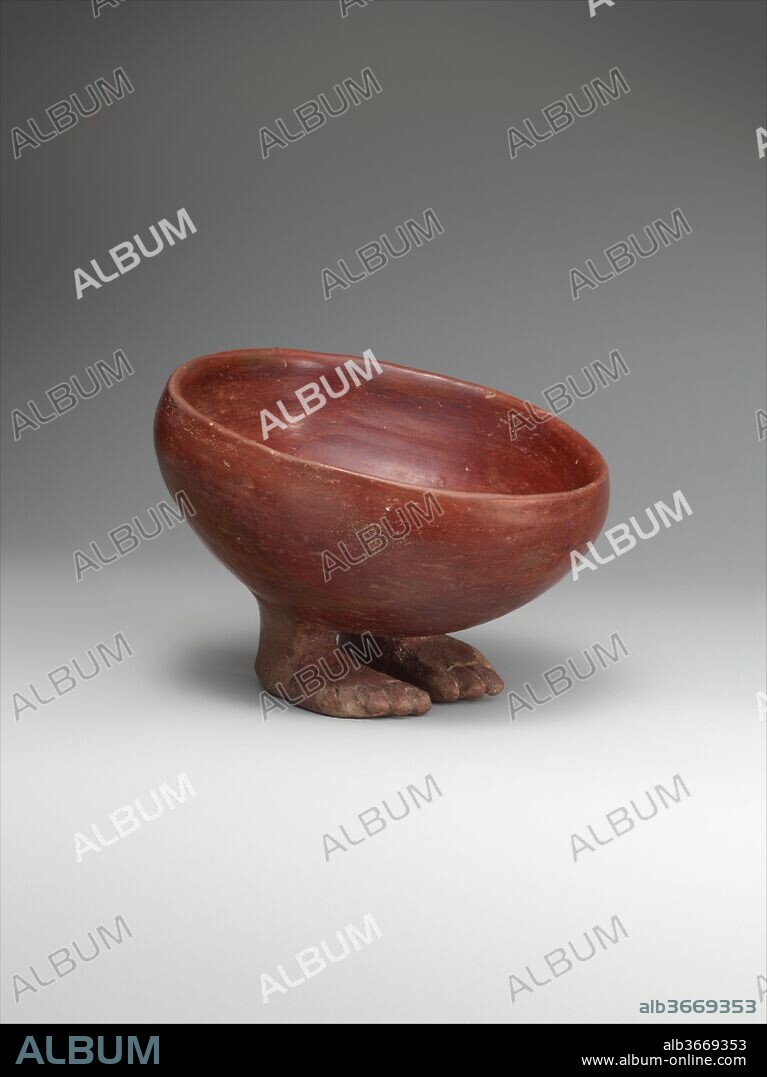alb3669353
Bowl with Human Feet

|
Añadir a otro lightbox |
|
Añadir a otro lightbox |



¿Ya tienes cuenta? Iniciar sesión
¿No tienes cuenta? Regístrate
Compra esta imagen.
Selecciona el uso:

Título:
Bowl with Human Feet
Descripción:
Ver traducción automática
Bowl with Human Feet. Dimensions: diam. 13.2 x W. 13.7 x D. 9.8 cm (5 3/16 x 5 3/8 x 3 7/8 in.). Date: ca. 3900-3650 B.C..
In the Predynastic Period, potters created a wide variety of ceramic vessels. One unusual type is a bowl with supports shaped like human feet. This simple, round bowl, tipped slightly forward as if to offer its contents, has two such feet solidly attached to its underside. Made from Nile clay, the bowl has a smoothed, slipped, and polished surface, giving it a light sheen. The bowl standing on feet is very similar in form to the Egyptian hieroglyph meaning "to bring." Since none of the known bowls of this type comes from a well-understood context, archaeologists cannot interpret their original use. Perhaps vessels like this were placed above a tomb to present offerings from the living to the deceased, a practice that was an established part of funerary ritual in pharaonic Egypt. Alternatively, they may have held offerings to a deity in his shrine.
Técnica/material:
Pottery (red polished ware)
Periodo:
Predynastic, Late Naqada l-Naqada II
Museo:
Metropolitan Museum of Art, New York, USA
Crédito:
Album / Metropolitan Museum of Art, NY
Autorizaciones:
Modelo: No - Propiedad: No
¿Preguntas relacionadas con los derechos?
¿Preguntas relacionadas con los derechos?
Tamaño imagen:
3186 x 4255 px | 38.8 MB
Tamaño impresión:
27.0 x 36.0 cm | 10.6 x 14.2 in (300 dpi)
Palabras clave:
 Pinterest
Pinterest Twitter
Twitter Facebook
Facebook Copiar enlace
Copiar enlace Email
Email
